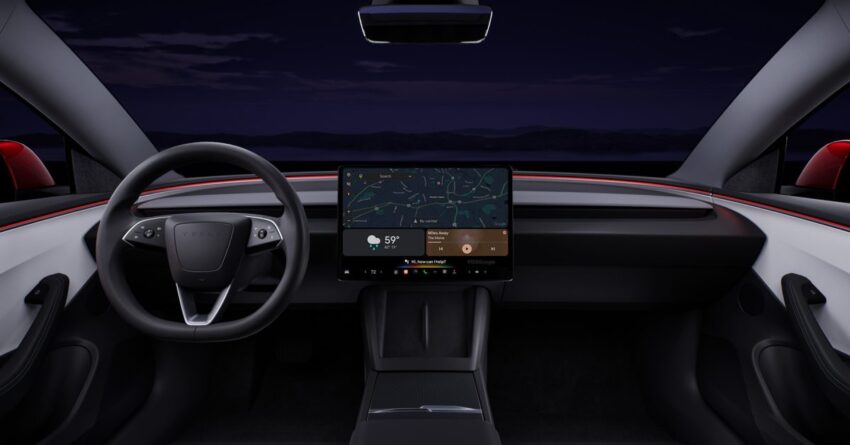
report tesla is working on adding carplay Tesla is reportedly exploring the possibility of integrating Apple’s CarPlay into its vehicles, while continuing to disregard support for Google’s Android Auto.
report tesla is working on adding carplay
Tesla’s Current Position on In-Car Software
Tesla has established itself as a leader in the electric vehicle (EV) market, known for its innovative technology and user-centric features. However, one notable aspect of Tesla’s approach has been its reluctance to adopt widely used in-car software platforms such as Apple’s CarPlay and Google’s Android Auto. These platforms allow users to seamlessly connect their smartphones to their vehicles, providing access to navigation, music, and communication apps directly through the car’s infotainment system.
Despite the popularity of these platforms, Tesla has opted to develop its own proprietary software, which it believes offers a more integrated and cohesive user experience. This decision has drawn mixed reactions from consumers and industry experts alike, with some praising Tesla’s commitment to innovation, while others criticize the lack of compatibility with widely used smartphone ecosystems.
Recent Developments: CarPlay Support on the Horizon
According to recent reports, Tesla is now considering the addition of Apple’s CarPlay support in its vehicles. This shift marks a significant change in Tesla’s strategy, as the company has historically prioritized its own software solutions over third-party applications. The decision to explore CarPlay integration suggests that Tesla is acknowledging the demand for greater connectivity options among its customer base.
Why CarPlay and Not Android Auto?
While Tesla appears to be moving towards supporting CarPlay, it is reportedly ignoring Android Auto. This decision raises questions about the company’s strategy and its implications for users of Android devices. The reasons behind this selective approach are not entirely clear, but several factors may be at play.
- Market Demographics: Tesla’s customer base predominantly consists of iPhone users. By prioritizing CarPlay, Tesla may aim to cater to the majority of its customers who already use Apple devices.
- Brand Alignment: Tesla and Apple share a similar ethos of innovation and premium branding. This alignment may make CarPlay a more appealing option for Tesla, as both companies emphasize user experience and cutting-edge technology.
- Technical Challenges: Integrating Android Auto may present more technical hurdles for Tesla, which could explain the decision to focus on CarPlay first. The complexities involved in adapting existing systems to accommodate Android Auto may be a deterrent.
Consumer Reactions and Implications
The potential introduction of CarPlay support has elicited a range of reactions from consumers. Many Tesla owners have long expressed a desire for better smartphone integration, particularly those who rely heavily on Apple’s ecosystem. The ability to use CarPlay would enhance the driving experience by providing easier access to navigation and entertainment options.
On the other hand, the exclusion of Android Auto users may lead to dissatisfaction among a segment of Tesla’s customer base. Android users have often voiced their frustration regarding the lack of compatibility, and this latest development could exacerbate those feelings. It raises questions about Tesla’s commitment to inclusivity and its willingness to cater to a diverse range of users.
Broader Industry Context
The automotive industry is increasingly recognizing the importance of in-car connectivity. As vehicles become more technologically advanced, consumers expect seamless integration with their smartphones. The rise of electric vehicles has further accelerated this trend, as manufacturers seek to differentiate themselves in a competitive market.
Many automakers have embraced CarPlay and Android Auto, recognizing that these platforms enhance the overall user experience. By allowing drivers to access their favorite apps and services, manufacturers can create a more engaging and personalized driving environment. Tesla’s initial reluctance to adopt these systems has set it apart from competitors, but the potential shift towards CarPlay indicates that the company may be reevaluating its stance.
Potential Challenges Ahead
While the prospect of CarPlay integration is promising, Tesla may face several challenges as it navigates this transition. Implementing a new software system requires significant resources, including development time, testing, and ongoing support. Additionally, Tesla must ensure that the integration does not compromise the performance or reliability of its existing software.
Furthermore, the company will need to communicate effectively with its customer base regarding the changes. Clear messaging about the benefits of CarPlay integration and the reasons for not supporting Android Auto will be crucial in managing consumer expectations and mitigating potential backlash.
Future of In-Car Software at Tesla
The decision to explore CarPlay support could signal a broader shift in Tesla’s approach to in-car software. As the automotive landscape continues to evolve, Tesla may need to adapt its strategies to remain competitive. The integration of CarPlay could be just the beginning, as the company may eventually consider expanding its software offerings to include Android Auto or other platforms in the future.
Moreover, the growing emphasis on software updates and over-the-air capabilities means that Tesla has the potential to enhance its vehicles continuously. By listening to customer feedback and adapting its software offerings, Tesla can maintain its reputation as an innovative leader in the EV market.
Conclusion
Tesla’s reported consideration of CarPlay support marks a significant development in the company’s approach to in-car technology. While the decision to ignore Android Auto may raise eyebrows, it reflects Tesla’s focus on catering to its primary customer base. As the automotive industry continues to evolve, Tesla’s ability to adapt its software offerings will be crucial in maintaining its competitive edge.
Ultimately, the integration of CarPlay could enhance the driving experience for many Tesla owners, while also prompting discussions about the importance of inclusivity in automotive technology. As consumers increasingly demand seamless connectivity, Tesla’s next steps will be closely watched by both supporters and critics alike.
Source: Original report
Was this helpful?
Last Modified: November 14, 2025 at 2:37 pm
1 views















